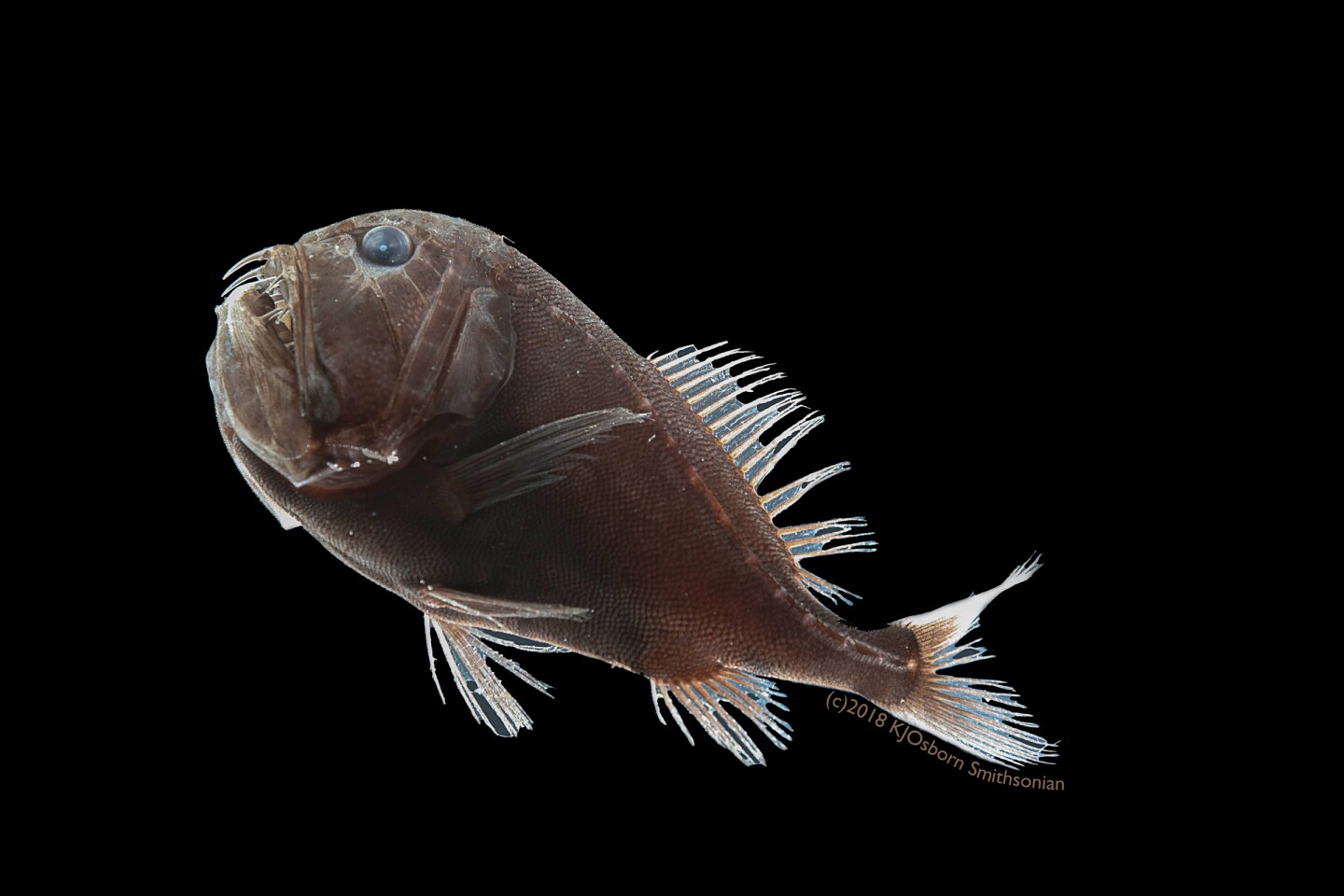Scientists have discovered ultra-black fish that absorb almost all light that hits them, allowing them to effectively hide in the deepest, darkest parts of the ocean. It appears to be a more efficient method than those used by other animals, and the find could help inform future advances in optical and camouflage technology.
The discovery was made by a team led by scientists from the Smithsonian and Duke University. The fish were found to absorb 99.5 percent of all light, making them appear as little more than silhouettes even in direct light. And it wasn’t just one clever species either – the technique has so far been found in 16 different, distantly related species.
It makes sense. These fish were all found living at ocean depths below 200 m (656 ft), in the inky blackness beyond the reach of sunlight. Many animals have adapted to this environment by producing their own light, called bioluminescence, which can be used to attract food or mates, or to illuminate predators and prey hiding in the dark.
So for other species, blending in with the pitch-black background is an effective survival strategy. Absorbing almost every photon of light that hits you is a great way to boost your odds of both not being eaten, and not spooking your own food.

Karen Osborn, Smithsonian
The team found evidence of the mechanism working to aid fish in both of those ways. They described an ultra-black ridgehead that uses its camouflage to avoid predation – and as a last resort, its detachable scales can let it slip away if grabbed.
The Pacific blackdragon, meanwhile, is a fearsome-looking creature that pairs ultra-black skin with a bioluminescent lure. That way, their own light doesn’t reflect off their skin to scare away prey. This thing even has transparent, antireflective teeth!
To investigate exactly how the fish manage to soak up light so effectively, the team closely examined specimens brought up from the deep in trawl nets. They found that the key was melanin, a light-absorbing pigment that also naturally darkens human skin to various degrees.
It turns out these fish have very high levels of melanin in their skin, and it’s arranged in a particularly special way. The pigment cells are made up of densely-packed compartments called melanosomes, which waste very little light thanks to their size, shape and positioning. What they don’t absorb themselves, they deflect to other melanosomes.
“Effectively what they’ve done is make a super-efficient, super-thin light trap,” says Karen Osborn, lead researcher on the study. “Light doesn’t bounce back; light doesn’t go through. It just goes into this layer, and it’s gone.”

Karen Osborn, Smithsonian
The same general principle is at work in other ultra-black materials, both natural and artificial, but the team says that this fish version is far more efficient. Some Birds of Paradise, for example, have extremely black feathers, which they contrast against vibrant colors to attract mates. The surface of these feathers is made up of microscopic bottlebrush-shaped structures, which scatter light between them. Artificial materials like Vantablack operate much the same way, scattering light between carbon nanotubes.
The melanin-based system used by the fish is much smaller and mechanically simpler, the team says. That could help inform the design of future ultra-black materials that are much thinner, more durable, and less expensive than what’s currently available.
“This is the only system that we know of that’s using the pigment itself to control any initially unabsorbed light,” says Osborn. “Instead of building some kind of structure that traps the light, if you were to make the absorbing pigment the right size and shape, you could achieve the same absorption potentially a lot cheaper and [make the material] a lot less fragile.”
The research was published in the journal Current Biology.
Source: Smithsonian
"light" - Google News
July 17, 2020 at 12:12PM
https://ift.tt/2Ws5dVu
Ultra-black fish that absorb 99.5% of light found in the deep ocean - New Atlas
"light" - Google News
https://ift.tt/2Wm8QLw
https://ift.tt/2Stbv5k
Bagikan Berita Ini















0 Response to "Ultra-black fish that absorb 99.5% of light found in the deep ocean - New Atlas"
Post a Comment